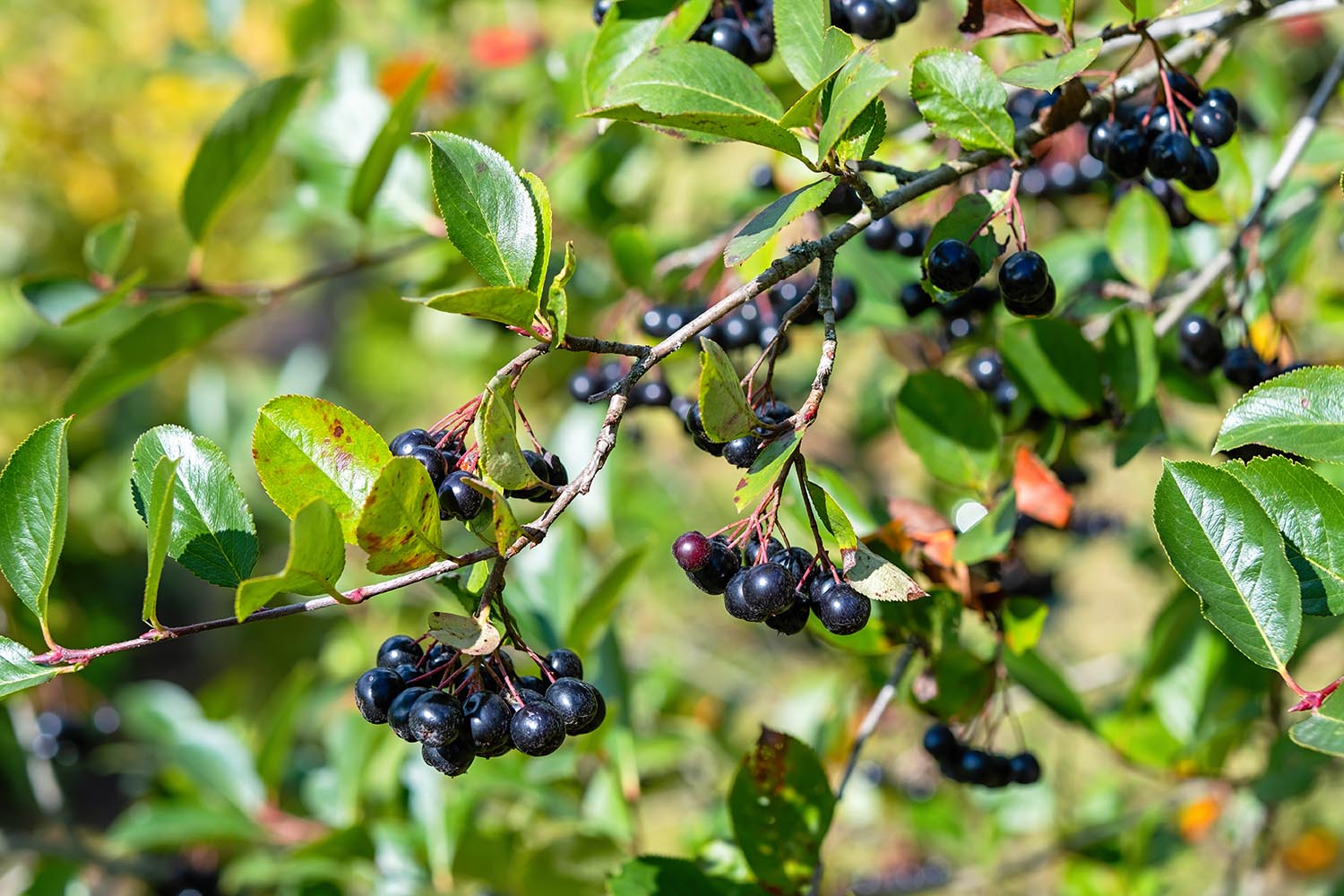By MIKE RALEY WPTF Weekend Gardener
Red Chokeberry (Aronia arbutifolia) and Black Chokeberry (Aronia melanocarpa) are versatile shrubs native to North Carolina. I have seen many of the red varieties, while black varieties have never shown up in my path. They are similar however, with obviously, the main difference, the color of the berries. In addition, the red has a more upright and slender shape preferring moist soil, while the black are more tolerant of various soil conditions. The berries of the black varieties usually drop in summer while the berries of the red varieties last until winter. Otherwise the two types are much alike. The flowers, of course, come in the spring and with the help of pollinators, make these small berries.
In the wildlife world, all kinds of birds just dig these plant’s berries, and so do some mammals. Yes, deer will eat Chokeberry shrubs, especially in the winter when their food supply is a little scarce. The berries of this shrub are very astringent so not all berry-loving animals can deal with the taste. If you pick any Chokeberries off the shrubs in your yard and eat them, they will make you pucker. They also could make you feel like you are choking because of their sour, dry qualities. Which brings me to the history of the Chokeberry.
Native American tribes used the berry in a number of ways as a food source and a food preservative. As Europeans encountered new plants, they took them home to various countries where they used them as ornamental plants. Over time they developed cultivars that were easier on the tastebuds and digestive system. In the 20th century, the Russians even used them to make wine. This was likely the “Aronia melencarpa” varieties which can be processed for all kinds of foodie type things.
The Chokeberry is high in antioxidants and flavanoides, so a lot of research is being done on these plants which usually aren’t the first choice for planting by homeowners. I’m told you can make jams out of Chokeberries. Check for varieties that will aid in making jams and jellies if you are so inclined. Black Chokeberries varieties “Viking,” “Nero,” “Autumn Magic” will work. When it comes to red Chokeberries, “Brilliantissima” is the one to look for. You have to cook them with a sweetener- boil and mash and then mix with other fruits to get around the bitterness. You can find them in bulk from Amazon under the name of Aronia berries. They are also sold at some specialty retailers. I must say, I have never had Chokeberry jam, nor do I ever remember anyone mentioning it on the show.
Plant your Chokeberry by using a sharp shovel. Anne Clapp and Rufus always recommend that. Dig a hole that is at least twice as wide as the root ball and just as deep. Place your shrub in the hole, gently spreading out the roots, and then backfill to ground level and water well. To get your plant off to a good start, incorporate some organic matter in the soil, and cover the root zone with a layer of mulch to help keep the soil cool and moist.
The Chokeberry can be an attractive plant. I have noticed however, that a single specimen doesn’t work well. Since it often looks a little leggy over time, plant in mass for a better effect. Just don’t plant a bunch of them thinking you are going to make jam every year. That seems like a lot of trouble unless you can’t figure out any other way to pucker!
